Photos and story by Edward Boches
The weather can be harsh, the winds frigid, the low tides so early it’s hard to get out of bed to work them. And that work — lifting sledgehammers to pound hats into the sand, hauling out canoes piled high with gear, culling oysters from grow bags that can weigh upwards of 50 pounds — calls for strength and endurance. Shellfishing can take a toll on the body.
Maybe it’s understandable that when most people imagine an oyster farmer, they picture a man. But that just means they haven’t been to Wellfleet, where according to Shellfish Constable Nancy Civetta over 30 percent of the oystermen are women.
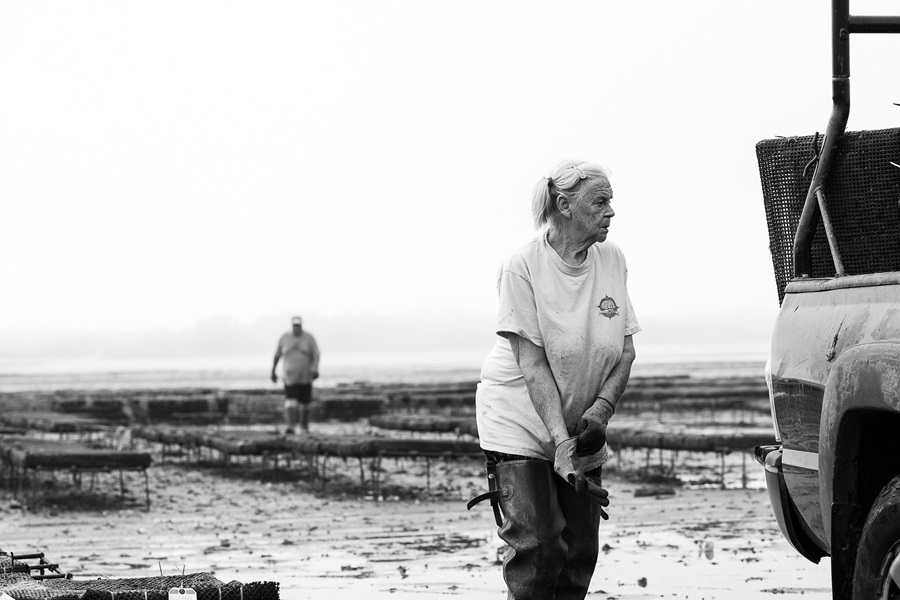
That wasn’t the case 70 years ago when a curious and outgoing eight-year-old named Peggy Jennings, on her first visit to Wellfleet, had the courage to ask Tony Oliver, the constable at that time, what the men were doing in the water off Mayo Beach. Oliver walked Peggy along the shore and explained that the men were oyster farming.

Back then, virtually every oyster grower was a man, but that didn’t deter Jennings. “I decided then and there that’s what I wanted to do,” she says. Jennings still works the grant she shares with her daughter Nora. “After that summer, all my friends were reading Nancy Drew, but I only read books about the ocean, boats, and fishing.”
Twenty-three years later, in 1977, Jennings moved to Wellfleet and started shellfishing. She remembers encountering resistance from the town’s select board and others, but she persisted, and by 1985 she’d secured a grant on Indian Neck.
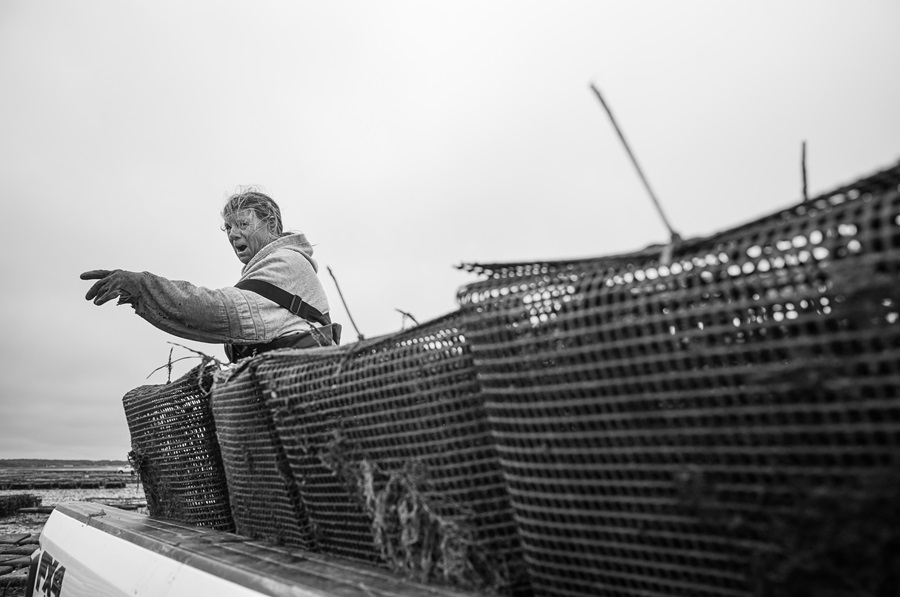
Not far away, Barbara Austin works her three-acre grant. Interested in marine biology from her time growing up by the beaches in Eastham, Austin went to work oyster farming immediately after graduating from high school in 1979. She got a grant the same year Jennings did.
“It wasn’t a full-time job right away,” Austin says. “By then I was married with a two-year-old, working as a waitress at the Double Dragon.” It was another 20 years before Austin could make oyster farming a full-time job.
Now, as you walk past the 11 oyster grants along Field Point and Indian Neck, you’ll see women lifting bags of oysters on at least half of them. A few may have learned by working the tide with a parent or a partner. But many, like Jennings and Austin, sought out shellfishing on their own for the independence it offered and for their love of the outdoors.
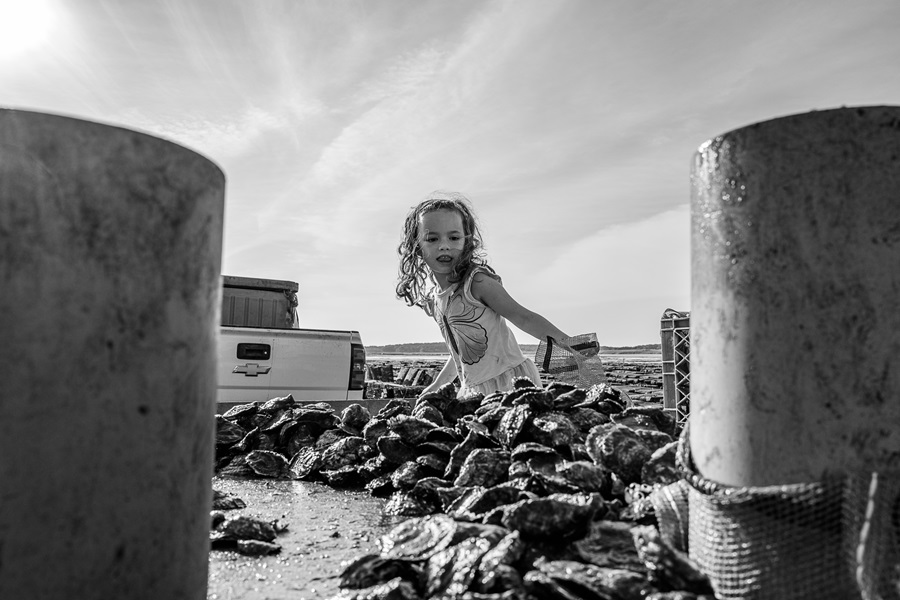
On a warm early fall day, Katie Murphy, wearing cutoff jeans, a T-shirt, and a pair of muck boots, is on the grant she shares with her husband, Mike DeVasto. Joined by a crew of three and sometimes by their six-year-old daughter, Violet, Murphy hauls gear from her yard, culls and counts oysters, and loads bags of market-ready shellfish into coolers on the back of her pickup truck.
Murphy has a master’s degree in natural resources management and worked at a sustainable farm collective when she was studying at the University of Vermont, but she knew little about oysters until she met DeVasto, whose uncle had a grant. Now she works on the family’s oyster farm. It’s “the dream job I never knew I wanted,” Murphy says.
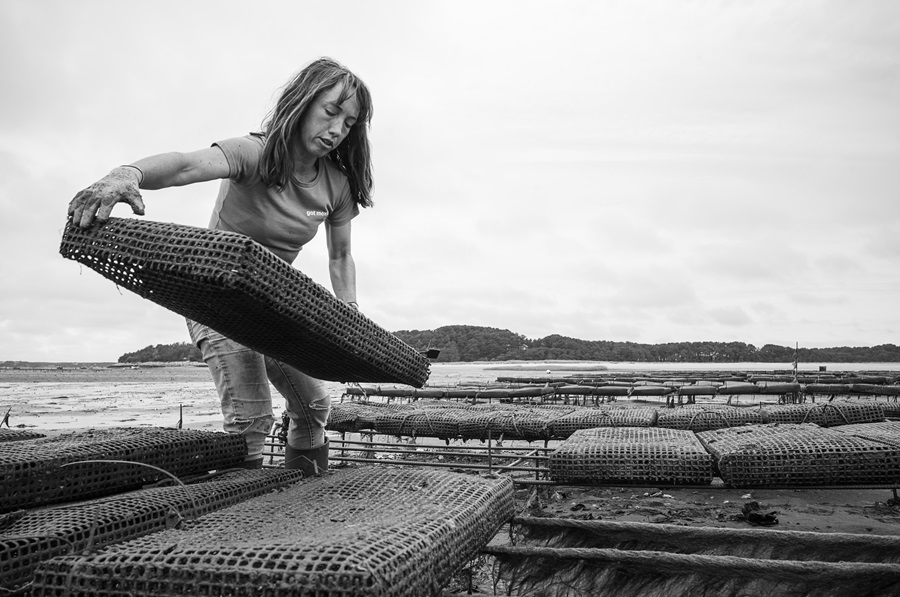
“There are times when the amount of labor and expense could make you doubt yourself, but then you just look around at the beauty of the tide,” says Murphy. That beauty is also social and cultural, she says. “All the small farmers side by side, making a living with their hands, growing a delicious food product that also cleans the water, and selling it to our neighbors — I love every part of it.”
On Loagy Bay, Casey Semple has her name on a grant with her stepfather, Evan Bruinooge. She’s been growing oysters since she was a teenager. “You’re doing something that feels more meaningful than working in an office,” she says. “You’re growing food.” Semple says she has always needed a second or third job to supplement her income, but “this is by far the most rewarding work I get to do.”
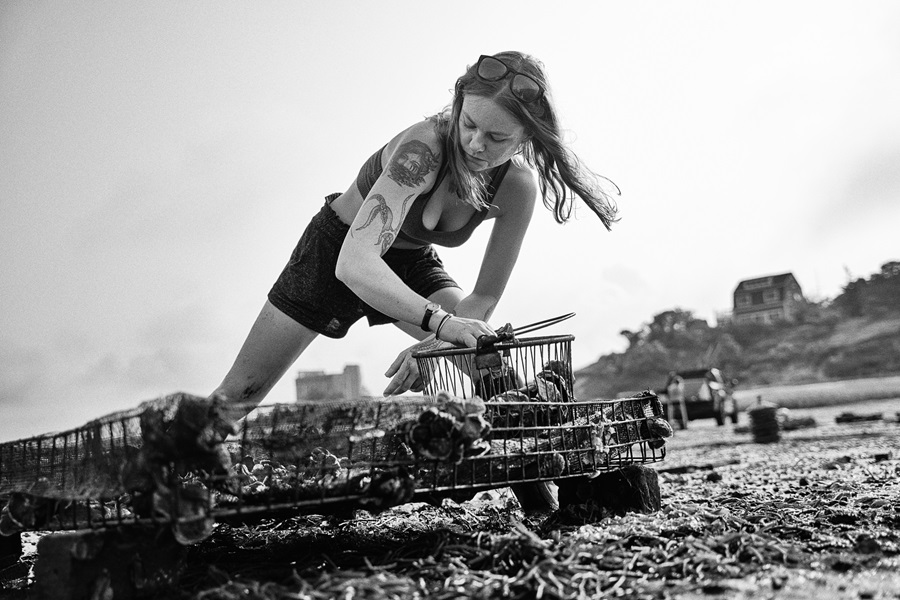
Women are also trying out the profession by taking summer jobs in shellfishing here. “I wanted something other than working in a restaurant,” says Mimi Malicoat Bois, who grew up in Provincetown. This was her third season working on Jim O’Connell’s Indian Neck grant. She worked alongside two other women college students, Mayim Richman and Adi Richman, sisters from New York City, and one recent graduate, her cousin Clementine Malicoat Valtz of Wellfleet. The four unanimously declare their love for a job that is outdoors, on the tide, and demands real physical labor.
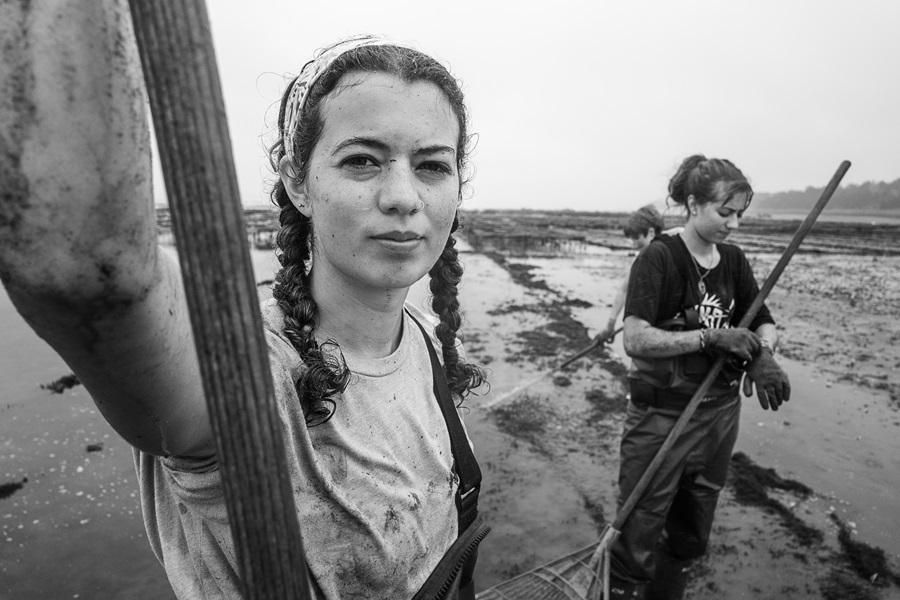
To qualify for a commercial license that will allow you to harvest in the wild, you have to have lived in Wellfleet for at least a year. Then there is the possibility of a grant — a license to farm a specific piece of town land in the harbor. Getting that requires three years of experience on someone else’s grant. Then, too, an opportunity has to become available and be won through a lottery system.

“It took time and commitment,” says Karen Johnson, who grew up in Dennis and now has a grant in Wellfleet. Johnson had worked in technology for 20 years when she decided she wanted to do something more physical. Over the next 10 years, she gained experience in aquaculture working for growers across the Cape and then took a job in her hometown as farm manager at Aquacultural Research Corporation, A.R.C., the Cape’s only shellfish hatchery.
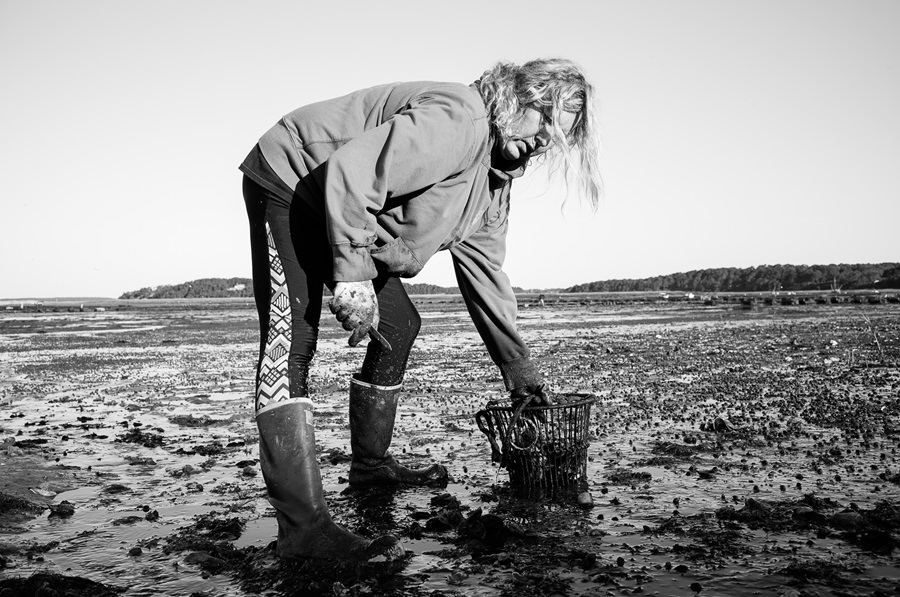
She had her sights set elsewhere, though. “I wanted to work for myself, and I wanted to work in Wellfleet,” Johnson says. She moved to town and a year later got her commercial license and started picking wild oysters. That and her previous farmhand experience qualified her to enter the town’s lottery when a grant became available on Egg Island in 2023. There were 19 contenders for two grants, and she won one.
“Despite having a grant, I’m still out there wild harvesting because I need to make enough money to pay for gear, seed, and other startup expenses,” she says. “But it’s worth it. I work on the beach. My co-workers are seagulls.”
Jennings says she’s glad there are now more women oyster growers. And the work on the tides has never lost its appeal. “There’s no place I’d rather be,” she says. “I’m happiest when I’m out here.”
Photographer Edward Boches has been documenting Wellfleet’s oyster and clam farming for several years. These images are part of a project focused on the women of the town’s shellfishing community.



